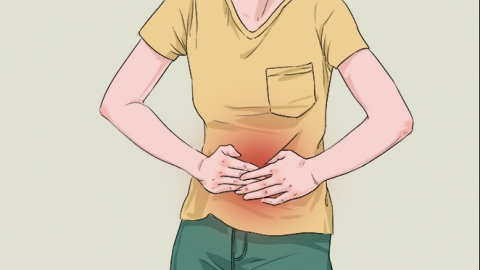What are the common causes of stomach pain in high school girls?
Common causes of stomach pain in high school girls may generally include excessive stress, improper diet, gastroesophageal reflux, gastric ulcer, and duodenal ulcer. If experiencing discomfort, timely medical consultation is recommended for appropriate treatment under a physician's guidance. Detailed explanations are as follows:

1. Excessive Stress
High school students often face heavy academic workloads and significant psychological pressure. This stress may negatively affect mental health and subsequently impact the digestive system, causing discomfort symptoms such as indigestion and stomach pain. Symptoms may be accompanied by fatigue, difficulty concentrating, and mood swings. It is recommended to relieve stress appropriately, maintain a cheerful mood, and engage in physical exercise or relaxation activities such as walking or yoga.
2. Improper Diet
If high school girls frequently consume greasy, spicy, or cold foods, such as fried chicken, chili peppers, or ice cream, these foods may irritate the gastric mucosa and surrounding nerves, causing symptoms like stomach pain and bloating. Symptoms may be accompanied by abdominal distension, vomiting, and loss of appetite. It is recommended to adjust eating habits and consume warm, easily digestible foods such as pumpkin porridge or millet porridge, which may help alleviate symptoms.
3. Gastroesophageal Reflux
Gastroesophageal reflux occurs due to dysfunction of the lower esophageal sphincter, allowing stomach acid and digestive juices to flow back into the esophagus. This irritates the esophageal mucosa, causing inflammation and pain, often accompanied by retrosternal burning sensation, belching, nausea, and other symptoms. Treatment is recommended under a physician's guidance with medications such as Cisapride tablets, Esomeprazole Magnesium Enteric-coated tablets, or Rabeprazole Sodium Enteric-coated tablets.
4. Gastric Ulcer
Gastric ulcers are usually caused by Helicobacter pylori infection or long-term use of nonsteroidal anti-inflammatory drugs (NSAIDs), which damage the gastric mucosal barrier, allowing gastric acid to erode the stomach lining and form ulcers. Inflammation at the ulcer site and irritation from gastric acid can cause pain. Symptoms typically manifest as upper abdominal pain, especially a few hours after meals, with more pronounced pain at night. It is recommended to follow medical advice and use medications such as Colloidal Bismuth Pectin capsules, Cimetidine injection, or Lansoprazole tablets to relieve symptoms.
5. Duodenal Ulcer
When the duodenal mucosa's defense mechanisms are overwhelmed by the aggressive effects of gastric acid and pepsin, mucosal damage occurs, leading to ulcers and subsequent pain. Pain typically presents as hunger-related or nocturnal pain that improves after eating, possibly accompanied by bloating, anorexia, and acid regurgitation. Treatment is recommended under a physician's guidance with medications such as Bismuth Potassium Citrate tablets, Belladonna tablets, or Rabeprazole Sodium Enteric-coated tablets.
It is advised to maintain regular meal times with appropriate portion sizes and avoid raw, cold, spicy, or greasy foods. High school students may prepare small snacks during breaks to avoid an empty stomach, which can help alleviate symptoms.




